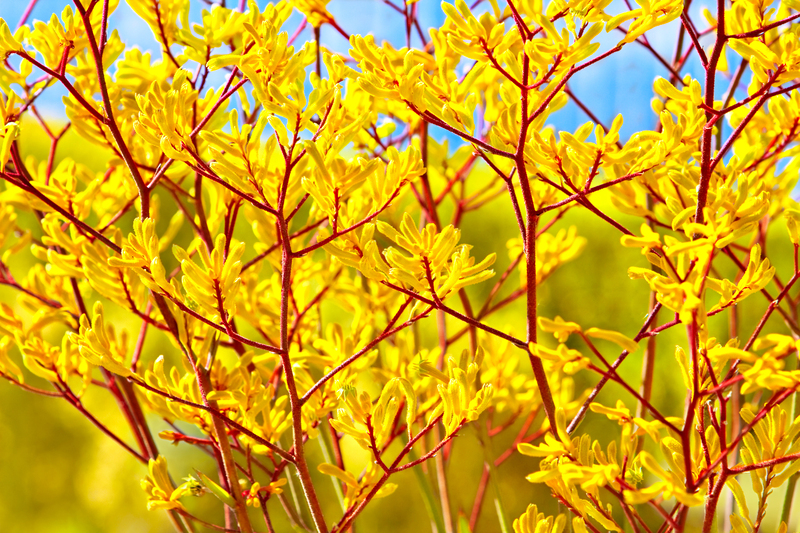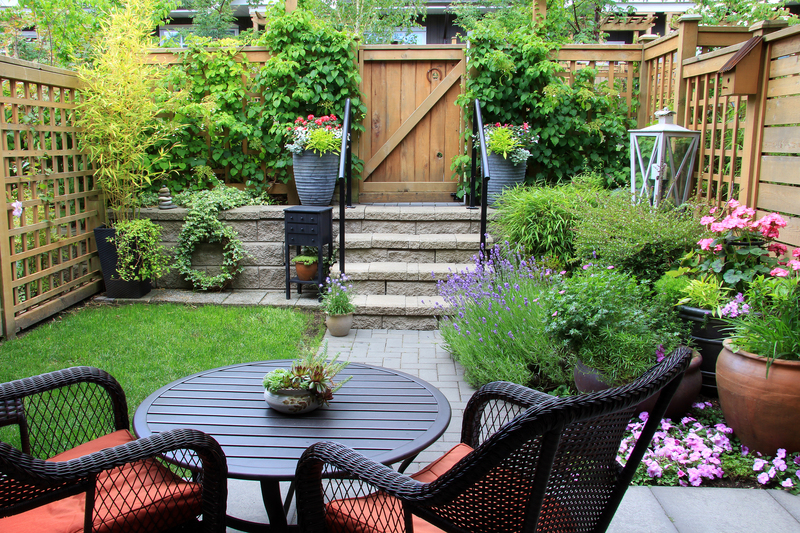Charming Plants That Thrive in Window Boxes: Your Guide to Blossoming Beauty
Window boxes are more than just an accent to your home's exterior--they're miniature gardens that can transform even the smallest spaces into vibrant, colorful displays. With the right selection of plants for window boxes, your windowsills can become captivating showcases of nature's beauty. This comprehensive guide will reveal charming plants that thrive in window boxes, provide expert care tips, and inspire you to create stunning arrangements that will delight season after season.

Why Choose Window Box Gardening?
Before diving into the best window box plants, let's explore why window box gardening is so rewarding:
- Space Efficiency: Window boxes allow gardening even in compact urban apartments.
- Curb Appeal: Carefully curated arrangements boost your home's visual charm.
- Personal Expression: Mix colors, shapes, and scents to reflect your personal style.
- Eco Benefits: Plants help purify air and support pollinators.
- Accessibility: Window boxes are easy to plant and maintain, making gardening approachable for all.
Factors to Consider When Selecting Plants for Window Boxes
- Sunlight: Assess whether your window faces north (shade), east/west (part sun), or south (full sun) to pick appropriate plants.
- Climate: Know your USDA Hardiness Zone for seasonal and perennial plant survival.
- Box Size and Soil Quality: Deeper window boxes (at least 6-8 inches) allow more root growth. Use high-quality potting mix for drainage and nutrition.
- Watering Needs: Some plants thrive on minimal watering, while others need more moisture. Match varieties with similar water requirements.
- Maintenance: Choose plants that match your willingness to fertilize, prune, or deadhead.
Best Charming Plants for Window Boxes
From cascading vines to seasonal blooms, here are the most charming flowers and foliage that thrive in window boxes:
1. Geraniums (Pelargonium)
- Light: Full sun to partial shade
- Why They're Charming: Vibrant single or double blooms in reds, pinks, whites, and purples. They flower continuously and withstand dry conditions.
- Tip: Deadhead spent blooms for more prolific flowering.
2. Pansies and Violas
- Light: Full sun to partial shade
- Why They're Appealing: Cheery "faces" in early spring or fall, providing a burst of color when other blooms may flag.
- Tip: Excellent for cooler climates or shoulder seasons.
3. Petunias
- Light: Full sun
- Why Petunias Shine: Trailing or bushy, their trumpet-shaped flowers come in every color, filling window boxes with bold displays all summer long.
- Tip: Regular deadheading encourages more blooms.
4. Ivy Geranium (Pelargonium peltatum)
- Light: Full to partial sun
- Highlight: Trailing stems with glossy ivy-like leaves and delicate blooms create elegant cascades over window box edges.
5. Lobelia
- Light: Partial shade to full sun (prefers cooler temps)
- Appeal: Masses of small blue, purple, or white flowers. Perfect for mixing with upright growers or edging your arrangement.
6. Sweet Alyssum (Lobularia maritima)
- Light: Full sun to partial shade
- Why It Charms: Tiny, honey-scented white or purple clusters spill over box edges and attract pollinators.
7. Fuchsia
- Light: Partial shade
- Signature Feature: Exotic, hanging flowers in pinks, reds, or purples that attract hummingbirds. Perfect for a north-facing window.
8. Begonia
- Light: Partial sun to shade
- Attraction: Thick, waxy leaves and colorful blooms. Tubular varieties offer abundant flowers and thrive in low light.
9. Calibrachoa (Million Bells)
- Light: Full sun
- Why Grow Milion Bells: Masses of petunia-like but smaller blooms in endless color combinations, all season long.
10. Trailing Vines: English Ivy, Creeping Jenny, Bacopa
- Purpose: Add movement, softening the box's structure with trailing greenery and dainty blooms.
- Light: Most thrive in partial sun; check individual needs.
Stunning Foliage Plants for Window Boxes
It's not all about flowers--lush foliage adds texture, contrast, and year-round interest to window box displays:
- Coleus: Rainbow-colored leaves in dramatic patterns, ideal for shade boxes.
- Dusty Miller: Silvery leaves brighten up any arrangement and contrast well with colorful blooms.
- Heuchera (Coral Bells): Mounds of burgundy, bronze, or lime foliage that last into autumn.
- Ferns: Boston or maidenhair ferns thrive in moisture and shade, creating an airy, woodland feel.
- Ornamental Grasses: Add height and movement, blending beautifully with both flowers and foliage.
Design Tips for Showstopping Window Box Arrangements
- Thrillers, Fillers, Spillers: Use thrillers (upright, focal-point plants), fillers (bushy, mid-height plants), and spillers (trailing plants) for dynamic arrangements.
- Color Coordination: Pick a palette that complements your home's exterior--go monochromatic for sophistication or mix bold shades for a playful display.
- Texture Matters: Combine broad-leaved plants with feathery or grassy foliage for textural contrast.
- Seasonal Rotation: Change up plantings according to season: pansies and bulbs in spring, petunias and ivy geraniums in summer, mums and ornamental peppers in autumn, and evergreens or winter greens for the colder months.
- Symmetry vs. Asymmetry: Symmetrical designs suit formal architecture; asymmetrical planting can create an artistic, relaxed vibe.
Window Box Planting and Maintenance Secrets
- Drainage Is Crucial: Make sure each box has adequate drainage holes. Layer the bottom with stones or broken pottery shards to prevent clogging.
- Right Soil Mix: Use a high-quality, lightweight potting mix. Avoid heavy garden soil, which compacts in containers.
- Watering Wisdom: Window boxes dry out quickly, especially in sunny or windy locations. Water often (sometimes daily in summer), feeling the soil for moisture.
- Feeding Routine: Nutrients in potting mix get depleted rapidly. Use a balanced, water-soluble fertilizer every 2-4 weeks during the growing season.
- Pinch and Prune: Regularly pinch back leggy growth and deadhead faded blooms to encourage fullness and maximize flowering.
- Rotate Boxes: If possible, rotate window boxes occasionally for even light exposure, particularly if one side is shaded.
Creating Seasonal Interest: Year-Round Window Box Planting Ideas
Spring:
- Bulbs: Dwarf daffodils, tulips, grape hyacinths
- Pansies and Violas: Cool-weather favorites with bold colors
- Primroses: Add cheer in early spring
Summer:
- Petunias, Calibrachoa, Geraniums: Non-stop vibrant flowers
- Trailing Vines: Ivy, sweet potato vine, creeping Jenny
- Aromatic Herbs: Basil, thyme, oregano--attractive and edible!
Autumn:
- Chrysanthemums: Late-season color
- Ornamental Peppers and Kale: Interesting foliage and color
- Heuchera: Lasting foliage into frost
Winter:
- Evergreens: Dwarf pines, rosemary, boxwood
- Winter Blooms: Cyclamen, hellebores
- Decorative Branches: Red twig dogwood, berry sprigs
Herbs and Edible Plants: Window Boxes With Purpose
Beautiful window box plants can also be edible. Here's how to create a charming culinary window box:
- Basil: Glossy, aromatic, and delicious in salads and pesto
- Parsley: Frilly green mounds and a versatile kitchen staple
- Chives: Thin, onion-scented spikes with edible purple blooms
- Mint: Lush and fast-growing (contain roots to prevent overgrowth)
- Strawberries: Compact, everbearing varieties add sweetness and pretty white flowers
- Lettuce: Cut-and-come-again salad greens that fill space and look fresh
Mixing herbs with flowers attracts pollinators while making your window box both ornamental and functional.
Common Window Box Gardening Questions
What is the easiest plant for window boxes?
Petunias, geraniums, and sweet potato vine are all remarkably easy to grow, forgiving of heat and less-than-perfect care.
Which plants tolerate full sun in window boxes?
Most sun-loving annuals like petunias, calibrachoa, verbena, marigolds, and geraniums are great choices for sunny window ledges.
Can you put perennials in window boxes?
Yes! Heuchera, miniature hostas, dwarf grasses, and even some small shrubs can grow in window boxes if winterized or brought indoors.
How do you keep window box plants healthy?
- Ensure excellent drainage
- Water consistently--never let soil totally dry out
- Fertilize regularly
- Pinch/prune to maintain shape and promote reblooming
- Monitor for pests and treat promptly

Inspirational Planting Recipes for Window Boxes
For a Sunny Window:
- Center: Upright geranium (red)
- Fillers: Petunias (pink, purple), sweet alyssum (white)
- Spillers: Trailing lobelia (blue), creeping Jenny (chartreuse)
For a Shady Window:
- Center: Begonia (red or orange)
- Fillers: Coleus (variegated), impatiens (white or pink)
- Spillers: English ivy, ferns
For an Edible Window Box:
- Basil, thyme, chives along with marigolds and nasturtiums (which are edible and add color)
Conclusion: Window Boxes Brimming with Charm
The joy of cultivating charming plants in window boxes lies in the endless creative potential--each box becomes a living tapestry that reflects your taste and welcomes every passerby. By choosing plants that thrive in window boxes--whether lush trailing vines, vibrant flowers, or aromatic herbs--you can elevate your home's appeal, indulge your green thumb, and savor beauty up close every day of the year.
Experiment, combine, and discover which plants for window boxes bring you the most delight. Whether you aim for colorful displays, edible aromas, or year-round texture, the perfect window box garden is only a window away.